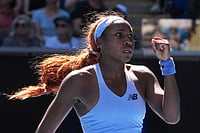The RSS has big plans for its centenary celebrations in 2025—plans whose success depends on the BJP continuing in power after the 2024 general elections. The RSS top brass have always claimed that they lead a socio-cultural organisation and do not interfere in electoral politics, preferring to keep their involvement behind closed doors. However, with small bushfires of dissent burning in most BJP-ruled states and the virulent second wave of Covid-19 amplifying the rumblings within, ‘samanway’ (coordination) meetings between RSS and BJP leaders have become more frequent. While RSS functionaries were quite visible on the ground during the recent West Bengal assembly elections, their involvement has gone several notches higher in Uttar Pradesh that will go to polls early next year. “In UP, with its 80 Lok Sabha seats, the stakes are too high for the BJP and the entire Sangh parivar,” says a BJP general secretary. “The state that catapulted the saffron party to its biggest wins in 2014 and 2019. What happens in the 2022 assembly polls will set the mood for 2024. That’s why the RSS is willing to play the peacemaker role in UP.”
Whispered notes of discontent against CM Yogi Adityanath’s style of functioning—his reliance on the bureaucracy rather than party MLAs and ministers, his proclivity towards Thakurs with others feeling sidelined, the heavy-handed style of his administration—became louder and more public with criticism of his handling of the pandemic. In a series of meetings with BJP leaders, the RSS reportedly asked them to take care of dissensions within other state units and decided to directly handle the situation in UP.
General secretary in-charge Arun Singh—a BJP leader from the RSS stable—was sent to Karnataka to reiterate support for CM B.S. Yediyurappa. In Gujarat, where state president C.R. Patil is at loggerheads with CM Vijay Rupani, the BJP top brass spoke to some of the legislators who were creating trouble and a cabinet rejig is likely ahead of assembly polls scheduled for the end of next year. In Madhya Pradesh and Himachal Pradesh, where there were reports about a change of leadership, the situation was handled by the BJP’s central leadership and peace was restored for the time being. Earlier, the central leadership had quelled dissent against Tripura CM Biplab Kumar Deb, but was forced to replace Uttarakhand CM Trivendra Singh Rawat after legislators rebelled against him.
While the RSS is keeping an eye on these states too, its attention is focused on UP. On May 23, the top leadership of the BJP and the RSS took stock of the situation in the state and reviewed the impact of the pandemic’s second wave. The meeting was attended by PM Narendra Modi, home minister Amit Shah, BJP president J.P. Nadda, RSS sah-sarkaryavah (general secretary) Dattatreya Hosabale and the BJP’s UP organisation secretary Sunil Bansal. Hosabale, No. 2 in the RSS, was in UP from May 24 to 28, meeting state-level functionaries and taking feedback on the public perception of the Yogi government. “He was concerned about the hit the Yogi government’s image had taken in the wake of Covid. He asked about reports of shallow graves on the banks of the Ganga and bodies floating in the holy river, and wanted to know what RSS functionaries could do to change the perception,” reveals a Sangh member who was present in one of the meetings.
Sources claim Hosabale has visited the state two more times since then and the message has gone to the state unit that elections will be fought under Yogi Adityanath’ leadership. “Yogi’s image of a Hindutva strongman with his hardline stance on anti-CAA protestors, love jihad laws and the shutting down of illegal slaughterhouses is in line with the RSS worldview and expansion plans. Also, they know Yogi is the best bet to ensure the Ram temple in Ayodhya is built before the 2024 elections,” the Sangh functionary explains.
The RSS also played mediator between Yogi and his deputy Keshav Prasad Maurya, who had suggested that the incumbent may not be the CM candidate in the 2022 elections. Hosabale, the BJP’s national general secretary (organisation) B.L. Santhosh and other RSS leaders, including Krishna Gopal, accompanied Yogi to Maurya’s house for lunch. “The RSS prefers to use strategies like ‘sah-bhoj’ (meals together) and ‘baithaks’ (meetings) to iron out differences. It cannot take a chance in UP, especially after losing Jharkhand, Chhattisgarh and West Bengal, where it has considerable presence,” a senior Sangh leader says.
A senior BJP leader, with a Sangh background, says it is wrong to say that the RSS is doing spadework for the UP elections. “It is doing nothing out of the ordinary. It is not preparing for elections. It is busy doing Covid relief work,” he iterates. He concedes, however, that the RSS was actively involved in Bengal elections, and also in Tripura in 2018. “In both states, it was an ideological, not political, fight for the RSS. In Bengal, it was against Muslim fundamentalists, who have consolidated under Mamata Banerjee. In Tripura, it was against the violent communist culture. These states, and the Northeast, are high-stake areas for the RSS,” he adds.
According to Ratan Sharda, who has written six books on RSS, the fight in Tripura was reminiscent of the early days of the Bharatiya Jana Sangh, when its members could not be distinguished from RSS cadres. “In Tripura, the BJP did not have much manpower,” he says. “Volunteers of the RSS and allied organisations stepped in to overthrow the yoke of the CPI(M). Everybody came together to protect themselves and change the regime. In West Bengal, the RSS and allied organisations worked with the BJP as it was a question of survival of their workers. UP does not have that problem as the BJP has a huge cadre of its own.”
Sharda says RSS cadres cannot be forced to work for the BJP. “Only those who are interested get into campaigning for the BJP. The connection has been there since 1951, when Syama Prasad Mookerjee asked for RSS help to bolster his party. Organisation secretaries have been going from the RSS to the BJP. There are some interacting points and some overlaps, but it is not correct to say that there is a 100 per cent overlap,” he adds.
According to Sharda, a lot of the talk about RSS involvement in polls today is because of the media’s focus on UP. “What Modi was to L.K. Advani, Yogi is to Modi. It was always one against the other for the media. Atal Bihari Vajpayee was softer than Advani. Advani was softer than Modi and Modi is softer than Yogi. That’s the equation the media likes. When K.S. Sudarshan was RSS chief, his conflict with Atal ji used to make news. Fake news was floated on differences between the two when they met in Delhi,” says Sharda, who believes there is a “huge lobby” that is scared of Yogi—“maybe because of his saffron clothes”—and creates stories to bring him down. “First they were after Modi, now they are after Yogi. Of course, Modi continues to be the prime target,” he adds.
Sharda finds it unfair that nobody writes about what is happening in Congress-ruled Rajasthan or the “horrendous alliance” of the Maha Vikas Aghadi in Maharashtra. “There are hardly any stories about the RSS working ceaselessly to help those affected by Covid. It is unfortunate that everything is seen through political lenses,” he adds.


























